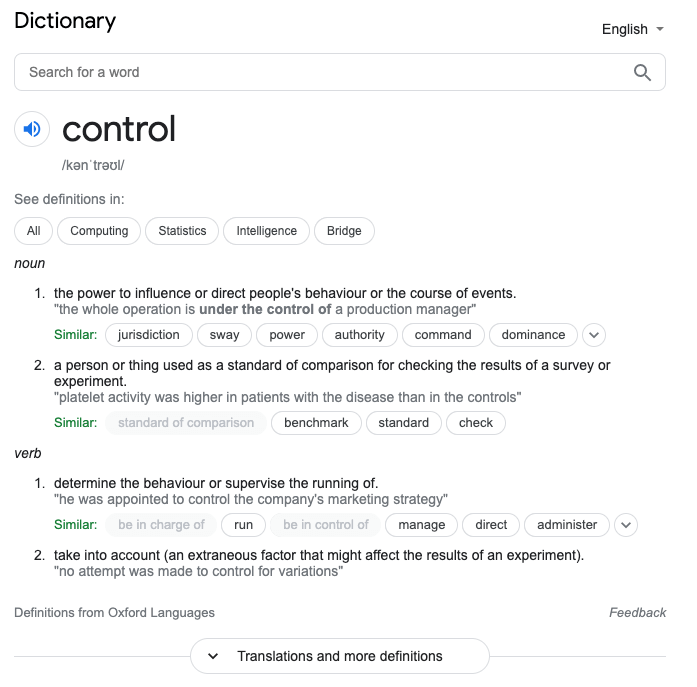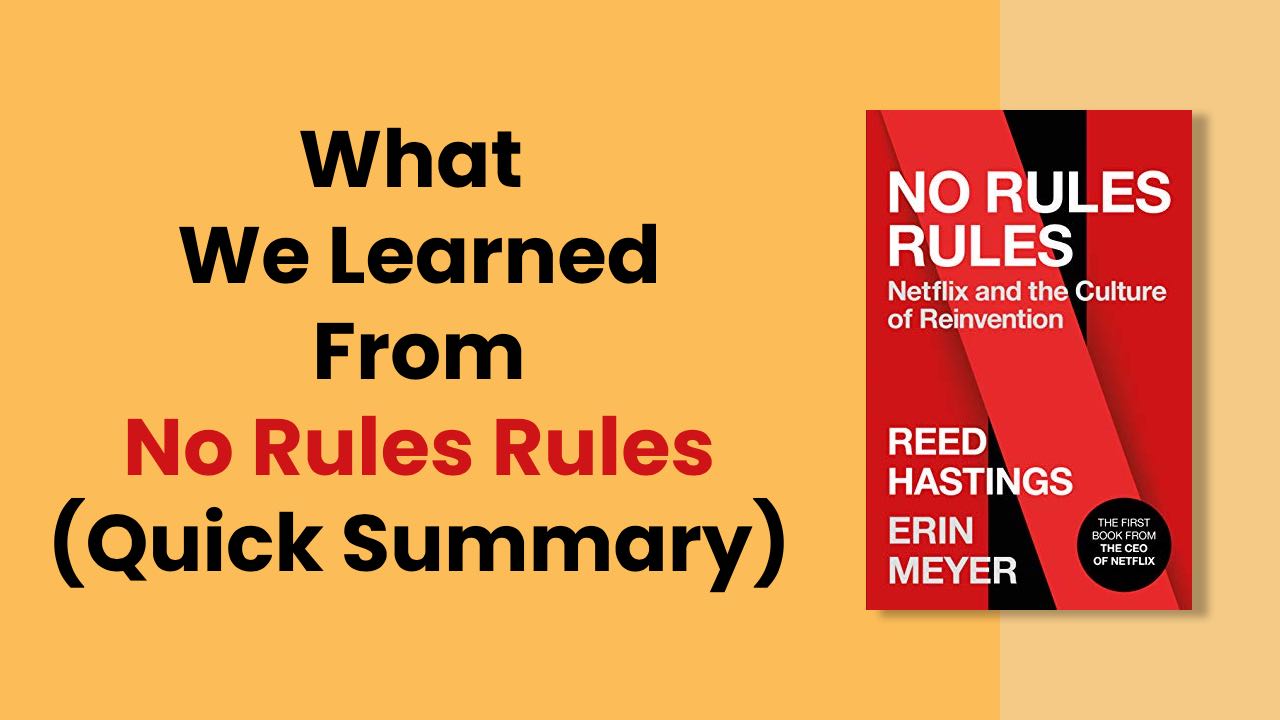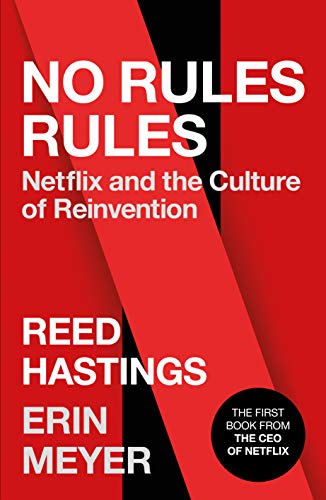No Rules Rules by Erin Meyer and Reed Hastings is a gift to established businesses and many thriving startups that guides them on how they can cultivate a strong workforce and healthy working environment by providing their employees complete freedom.
But, does freedom means employees got the complete liberty to do anything they want?
Now, you may think if this is the case, then it might put the company in danger. Because not all people are good people, and not all employees are faithful and honest.
Yes, you are right.
But at Netflix, with freedom comes responsibility, and Netflix takes care of it pretty well.
They provide a culture of freedom & responsibility to run their company by every member of the organisation.
And this is what No Rules Rules discuss.
It shares Ten Dots that can help you fulfil your business goals.
By looking at the current success of Netflix, No Rules Rules is the #1 must-read business book if you want to build a company as successful as Netflix.
Before you read this book in a day, let’s quickly look at the summary of the ten dots it shares.
Moreover, to these ten dots, we have made some improvements of our own, that we think Netflix is missing and should be applied.
Let’s see what they are!
The First Dot — Build Stunning Colleagues
The first thing No Rules Rules share with you is that hire and keep outstanding employees.
Leave no space for an adequate or average colleague because a single hole in a boat is capable enough to sink it to the bottom.
Moreover, as the saying goes, “If you sit with a crow, you’ll soon become like it.”

Meaning, if you’ve got a team of 5 employees of which four are outstanding and star player, but one is average, then soon others will start to behave like the average one.
Why?
Because when the average employee makes a mistake or delay completing a task, you as the project manager do not point any finger at it and keep him.
Then, the star players think it’s okay to perform adequately. So, they also start to perform average. And research also backs it.
Thus, the project and soon the company will go to the sinkhole.
The Second Dot — Give & Receive Candid Feedbacks
Feedbacks are critical.
And we do like to give it to the people; however, we don’t like to receive it back.
Mostly in the Asian society.
Moreover, when we give feedback, we try to please the person rather than helping him/her solving the problem.
We try indirect ways to put our point in front of people, which mislead the feedback receiver. Or he/she might not give more attention to it because it pleases him/her.

That was between colleagues, but what about a give and take between a boss and an employee.
God save the giver. Nobody likes to tell a boss what she’s doing wrong because it can put an employee’s job in jeopardy.
But not telling the boss when she’s doing something wrong could potentially harm the business or might take everything down with her.
So, what should we do?
The indirect way isn’t helping us, and if we try the direct way, we might cross the limit.
What’s left then?
That’s what No Rules Rules tell us, how we can give and receive candid feedback, which is,
Give and receive direct feedback with a 4A Guideline.
Now what’s a 4A Guideline?
Well, it’s a toolkit that helps bosses and employees understand how they can give and receive direct and actionable feedback that won’t cross the line and help them grow their business and individual performance.
The 4A Guideline that No Rules Rules discusses is as follows.
- Aim to assist. (Giving feedback)
- Feedback needs to be actionable. (Giving feedback)
- Don’t be defensive. Instead, be appreciative. (Receiving feedback)
- Accept or discard. (Receiving feedback)
If these guidelines aren’t helping you give and receive candid feedback, you can try this approach to learn how to give and receive feedback effectively.
The Third Dot — Begin Removing Control Policies
Control.
What does it even mean? According to Google’s dictionary, it is,

“The power to influence or direct people’s behaviour or the course of events.”
Is it possible?
Or even if it is, would someone like to work under these circumstances?
We won’t for sure, and we can guess it’s the same for you as well.
Would you like to read this blog post under rules or the way you read any piece on the internet?
The way you read, right?
But, now you’d think, without control an organisation could go under tracks.

No, it won’t. Because the first control, No Rules Rules, discusses removing isn’t like action against sexual harassment or racism.
Instead, they are Vacation and Travel Expense policies.
Removing the vacation policy isn’t mean that employees aren’t allowed to take off from work.
Rather it means there is no certain duration that can simply guide you on how many days you can take off — 15 days, 30 days, 2 months, or 3 months vacation policy.
And when you remove these policies, it’s essential that you remind or train employees about their responsibilities regarding the company.

Yes, they are free to take a vacation whenever they want and for however long they want, but it’s their responsibility that they inform about it.
It’s their responsibility to guide their fellow employees about some particular task and how to proceed with that.
They know when it’s crucial for them to be available in the office.
And above all, you — the boss, remember to take vacations as much as you can. Otherwise, your “no vacation policy” would become a “No vacation” policy.

When it comes to travel and other expenses, train your employees to see the company’s funds as the company’s not theirs.
Plus, push this thing in their mind that they’re supposed to expense it for the organisation’s purpose and what’s in companies best interest.
Because when we tell people to expense the organisation’s money as their own, they don’t think in company’s favour.
They think or expense money out of their habit.
Two things would happen when employees expense the company’s money as their own,
- If he’s a big spender, he’ll spend more and more even if it’s not necessary.
- If he’s a little tight on spending his own, he’ll spend less even if it’s necessary for the company. Because of his less spending habit, your company would lose a good deal due to a low offer he’d made to the deal provider, and your competition will get that by spending a little more than your company had quoted.
The Fourth Dot — Pay Employees More Than Their Personal Domain
Yup, that’s right.
Because everybody likes making more money.
And if you’re paying them top of their personal market, then your highly talented, responsible, and positive feedback exchanging team isn’t going to leave your organisation.
Thus, continuous growth and better results.
The Fifth Dot — Open the Books or Be Transparent Fully
Sounds scary?
Because if you’re going to open everything to the employees, they might leak something sensitive, and your competitor might leverage it.
No, that’s not going to happen.
Because when you’re going to open the books, you’re going to make this clear that if they or their relatives (Friend, Child, Parents, Spouse, or even ex Partners) leak the information, they’ll go to jail.
Moreover, you’ve already built a stunning colleague team that is trustworthy and who knows what their responsibilities are.
After all by opening books you’ve shown them that you trust them and that they’re part of the company that generates feelings of ownership, commitment, and responsibilities.
It’s their company, if they leak something they’ll betray themselves.
The Sixth Dot — Remove High Authority Approval Necessity
The ladder system in an organisation never happens to benefit.
Why?
The reason is simple, it takes time, and for a thriving company in this fast-paced tech world environment, every second is crucial.
If an instant or early decision is required in a particular situation, and an employee seeks approval from a boss to finalize that decision, he/she might lose that particular situation.

Because a boss might need approval from his boss, and his boss might need approval from another boss above him.
But with previous dots of No Rules Rules, you have created a working environment full of highly talented employees you can trust and who know their responsibility; it is easy to remove a ladder-like, tightly coupled system.
The Seventh Dot — Keep More Talented Employees
It’s not necessary that the one who used to perform excellently will keep performing at his best.
So, how are you going to maintain your company’s high-performing traits among employees?
By ranking their performance?
No, you can’t do that because it will create competition among colleagues and they’ll start working like a rival instead of as a team.
So, what will you do?
You’ll run a test, The Keeper Test.
In this test you or all the managers will answer this question, either asked by themselves or by the employee —
“If they (I) told me (you) they were (I was) leaving for a similar job at a competitor or peer company would I (you) fight hard to keep them (me)?”
The Eight, No Rules Rules Dot — Max Up Candour
Giving and receiving candid feedback has already become an integral part of the organisation.
However, giving one-to-one performance feedback isn’t enough to create a more open working environment in the company.
Therefore, to max up candour, organise events where people can publicly share their opinions.
Train your employees in a way that when they start to work on an idea, they spread it out to the entire organisation for feedback and better insights.
The Ninth Dot — Lead With Context, Not Control
As you’ve already created an organisation with high potential people, there’s no need to direct their actions.
If someone comes with an idea and seeks your advice, don’t try to press your thoughts and force them to work under your conditions. Instead, share what you think and let them make the decision.
If someone in your team does something foolish, don’t blame the person or yourself, rather ask yourself what context you failed to set.
Ask yourself what is it if you failed to train your people.
If your organisation deals in an industry market where safety measures are necessary, you should focus on error prevention. But, if it’s operating in a domain where new ideas are worth taking risks, then your goal should be innovation.
That’s what it is mean by lead with context, not control.
The Tenth Dot — Get the Book to Know It All
If we would tell you everything that No Rules Rules discuss, then what’s the point of getting it.
To know the 10th dot of it, you’ve to get it, because it’s just a summary, and inside the book, you’ll get to know more.
As we said earlier, No Rules Rules is a good book, and every business owner or someone who’s looking to start should read it to create a million-dollar organisation.
So, go and get it, and let us know what you think about it.
Thank you
Nathawat Brothers
Putting thoughts for everyone

